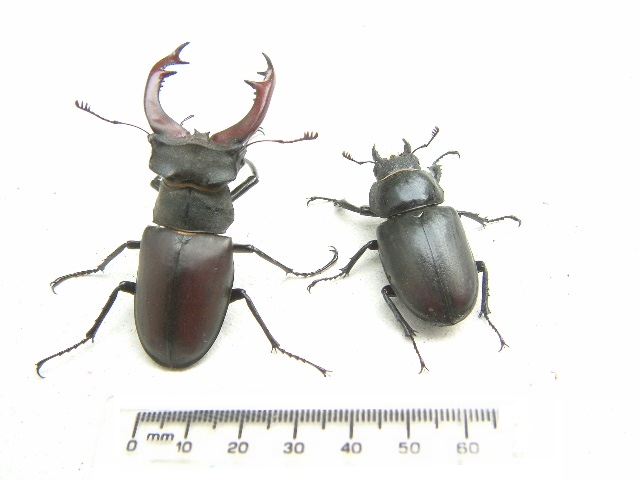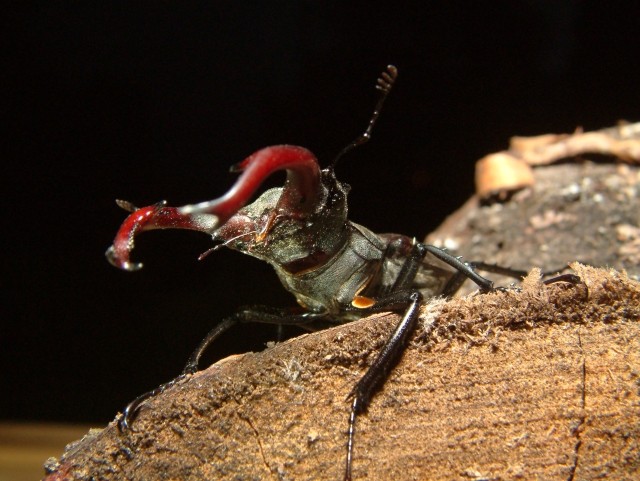
Photo by Maria Fremlin. Colchester, Essex, England.

Photo by Maria Fremlin. Colchester, Essex, England.

Photo by Maria Fremlin. Colchester, Essex, England. June 7 2006, 09:48 hrs.
Large male stag beetle, 46 mm excluding mandibles. Note how much thinner the tibia of his foreleg is in comparison with the one of the female, see above. Also, the nice yellow patch close to the body, on the femur: lots of long golden hairs, all facing forward! The female also has them and so do all the members of the Lucanidae family. Even some dung beetles of the family Geotrupidae have them. It is now known that these patches might help with the dispersal of their pheromones [1].
Stag beetles have poor vision but on the other hand have an acute sense of smell.
Photo by Maria Fremlin. Colchester, Essex, England.
STATUS:
Conservation status - The large European stag beetle (Lucanus cervus) is not listed as endangered in the UK; it is just a Priority Species for Conservation [2].
Legal status - Lucanus cervus is protected in the UK under Schedule 5 of the Wildlife and Countryside Act 1981, as amended.
[1] - Harvey D.J. (2007) Aspects of the Biology and Ecology of the Stag Beetle (Lucanus cervus). PhD thesis.
Last modified: Tues April 5 2019

Please note that the status of this stag beetle is different in the continent: Near Threatened on the IUCN red list, see http://www.iucnredlist.org.
[2] - For more, check the latest Natural England review of Scarabaeoidea:
A review of the status of the beetles of Great Britain: The stag beetles, dor beetles, dung beetles, chafers and their allies - Lucanidae, Geotrupidae, Trogidae and Scarabaeidae (NECR224), 2016. Link:
http://publications.naturalengland.org.uk/publication/5488450394914816.